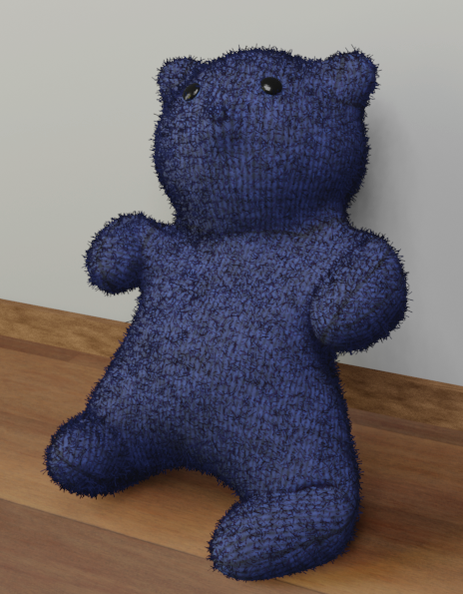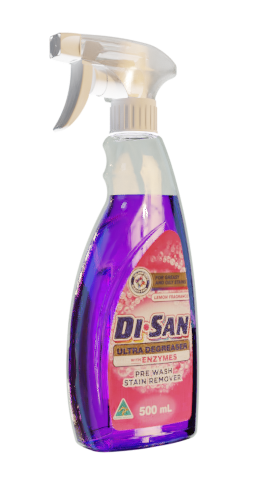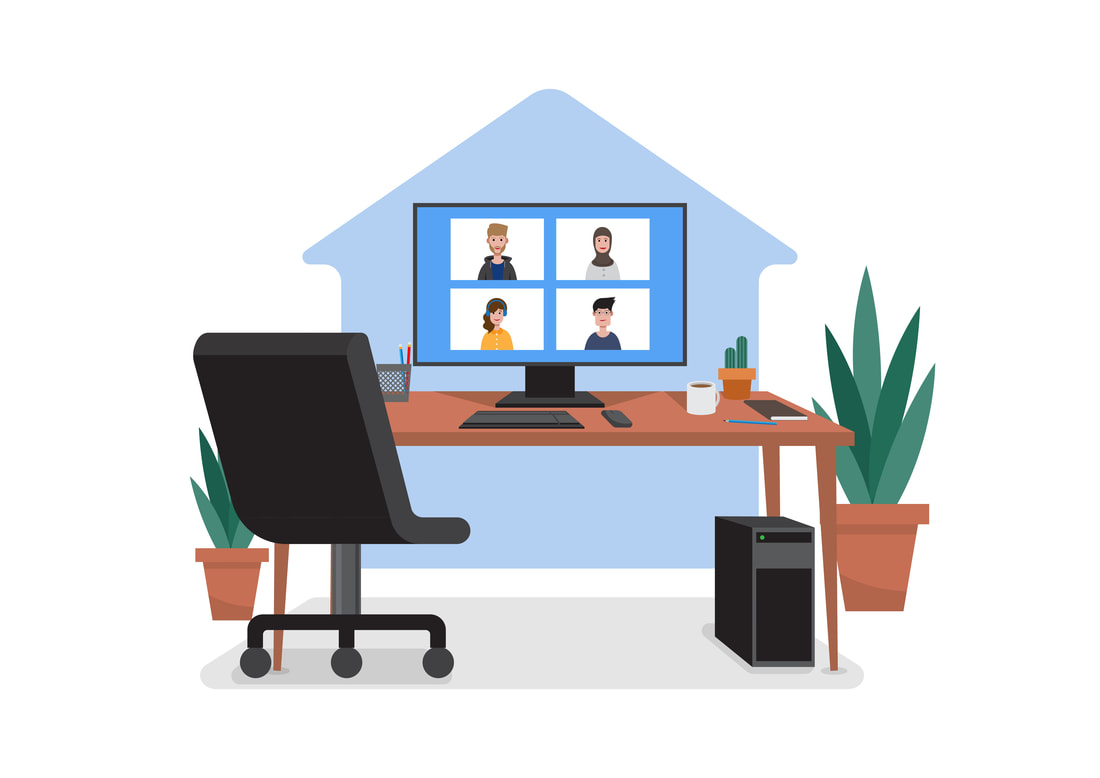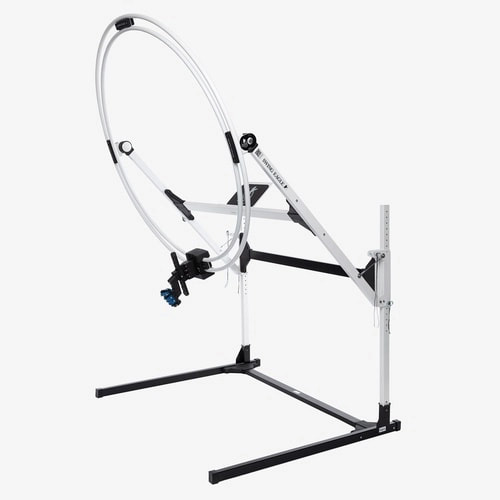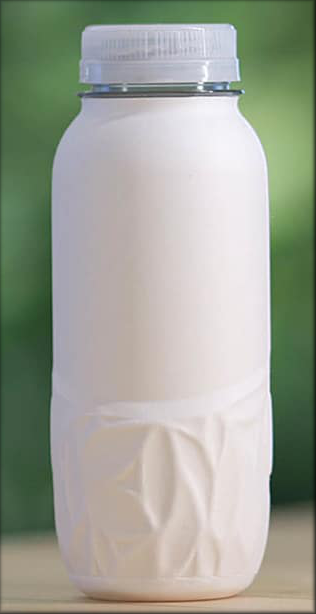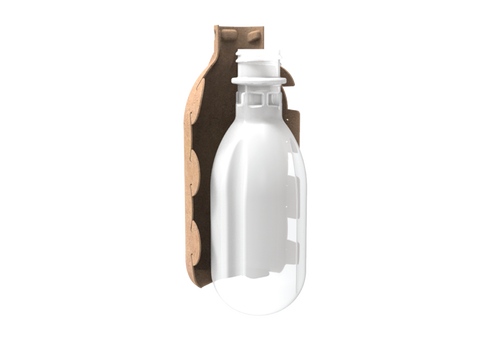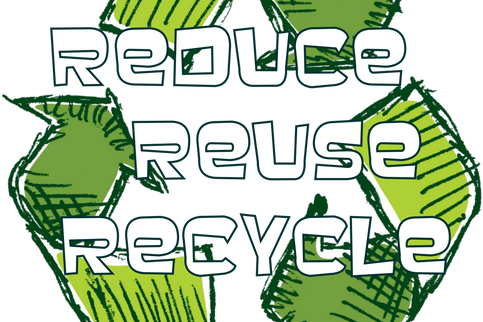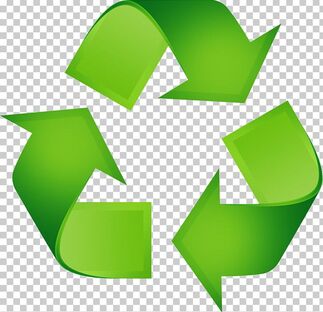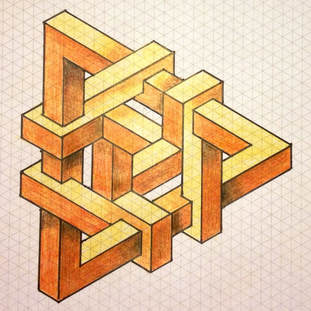|
Not quite a "Pig" but an early Blender exercise in modelling hard and soft materials. This is probably not the question you thought you’d be grappling with today. But when my kids were much younger than they are now, they had a great picture book called "If You Give a Pig a Pancake" by Laura Joffe Numeroff. The basic premise is if you give a pig a pancake, she'll want some syrup to go with it. You'll give her some of your favorite maple syrup, and she'll probably get all sticky, so she'll want to take a bath. She'll ask you for some bubbles. When you give her the bubbles... and so it goes with each distraction leading to another until finally she is reminded of the pancake. Well this is just how I feel at the moment. In my quest for ongoing professional development, I have taken the challenge to learn how to use the new fantastically powerful, multi-module free rendering and animation program - Blender. As I explore the software, I am constantly side-tracked, going on ever more exciting side journeys; one distraction leading to another. I feel very much like that pig with a pancake. The Blender community is fantastic and it seems that there are hundreds of users posting tutorials for everything from the basics to really complicated concepts. Youtube is full of these and although many cover the same basic outcome there seem to be a plethora of ways to tackle any project. Whilst it is so interesting to see this, it means that I start by viewing one tutorial then halfway through I see something I need to clarify and so I go on to yet another before finally returning to the beginning only to start again. This could be a frustrating exercise, but before I embarked on this journey of learning I placed only one criteria onto it; that is, I wanted to enjoy the process and improve the quality of renderings I was producing. I did not care how long it took. Thankfully it has not taken very long to be producing images that are so real that everytime I look at them, I am still blown away. It is really exciting and the more I do the more I want to do. Now it is not that I was not satisfied with the images I could produce before. In fact, I thought that my current software – Photoview 360, the SolidWorks renderer, was fantastic and very simple to use. However, when an electronics engineer, who secretly is a frustrated industrial designer, sent me some photorealistic images of his electronics in the housing I was designing, I was just blown away. It was so much more realistic and convincing than the Photoview renders. It was awesome to see. I could only imagine what I could be doing if I really got into it. At the moment I am just concentrating on how to get the best rendered images – which means understanding node editing, cameras, lighting, materials and compositing, but there is so much more. The 3D animation module includes all kinds of particle and physics properties and other wild stuff to learn, meaning this happy pig will be on a mission for a very long time. Early exercise in lighting and rendering transparent materials with decals.
0 Comments
Image courtesy of vecteezy.com Over the last I don’t know how many decades or centuries, efforts to gain efficiencies and improved profits have seen working hours, office locations and styles change and adapt to the prevailing times. The industrial revolution, world wars, previous epidemics and even inclement weather have all driven changes. So, it is not that unique that working trends have shifted again following Covid’s upheavals, shutdowns and remote working over the past two years.
In times of recession or slow-down, large companies have implemented shorter working weeks, with flexible hours. In fact even in fairly stable times, some companies have experimented with providing freedoms to employees to set their own hours, with results being driven and measured by project or task goals. Experimentation with office styles has also covered the spectrum of everything from individual offices to cubicles, and open plan to hot desking, where employees do not even have a fixed space to work in. Even remote working or working from home is not unique; but perhaps what has changed is the fact it has been embraced and has proved that managers do not need to physically stand over their employees’ shoulders. I believe it has given confidence to more potential clients that it is not where you work from or what the office may look like, but the quality of the work provided and the level of professionalism and communication delivered. These trends have created new challenges which technology has solved creating seamless, decentralised offices, where teamwork and collaboration is alive and thriving. In fact, I have seen first-hand where new graduates spent only their first day in a conventional office environment (over a year ago) and have been remote working ever since. Their organisation have implemented ideal practices and you could go so far as to say that personal interaction and teamwork may not have thrived and been as interactive in the physical world. Maybe this is a testament to the Millennial generation’s view on the world? Some of the by-products of this mass decentralisation can be felt on our roads where congestion is less. Employees may arrive at work more refreshed (either from a better or no commute) and deliver more productive hours while at the same time gaining more of their own. Time that could be spent exercising to be healthier, or with family to be happier, or even just being more productive. So a win for all – employers, employees, clients and the environment. Obviously remote working is not optimal in every situation and with humans being social animals, it may be that a great deal of society prefers physical contact rather than a virtual one, but this does not diminish the fact that home offices and remote working do work. So what is my take away? Times will change; we will return to a version of our former working environments, but the fact that some of our suppliers are working from home offices will not be as alien or frowned on and may even be embraced as beneficial. Every sportsperson strives to improve their game. For that, practice is key – the vehicle for building habits. But practicing the wrong technique can be more detrimental than not practicing at all.
In golf, a device which allows you to practice your swing is not new. But the Swing Eagle is the first of its kind to not only allow you to feel your swing, but also to be able to practice away from the golf course. Most golf trainers are vast (over 2m in diameter) and heavy, therefore location is limited to golf training clinics. Those that can be used elsewhere simply have a hoop that the player has to guide their club against. Neither actually control the club. Bortz Product Design was given a design brief which included allowing this training device to be brought to every player and to make it portable, compact and cheap enough to be part of a player’s own golf equipment. The device should be easily set up at home and allow for easy access at any time. It needed to help you learn the perfect swing by guiding both your hands and the club, teaching the feel of a pro’s swing. The Swing Eagle was the brainchild of Tim Kierath, a keen golfer and founder of Hoselink, a company specialising in patented world leading garden hose fittings. The development of the trainer took determination and persistence, with multiple prototypes and iterations. Numerous design issues were to be solved, such as: • How to make one device adjustable to fit all size players, left- or right-handed? • How to get the correct swing and layoff? • How to make it light and portable? • How to ensure the right feel in the player’s hand? When the first prototype wasn’t right, taking inspiration from rollercoasters and see-saws and a unique approach of modelling it up in K’Nex (construction toy system), was the answer. And so, a specialised club carriage was developed that guides your hands and the club at the same time, allowing you to practice the pro’s swing on or off the golf course. To view this product, go to: https://www.swingeagle.com.au/ In an earlier blog I wrote about a hybrid bottle which was aimed at reducing plastic, with a flexible plastic liner inside a paper outer assembly, created by a company called EcologicTM. This was a great start, but not a complete solution. Coca-Cola have recently spoken about an even greater goal – challenging themselves to make a bottle made entirely of paper and partnering with Danish startup Paboco (short for The Paper Bottle Company), to do so. At this stage their design is not unlike Ecologic’sTM, with a plastic liner and cap (although granted they are 100% recyclable), inside their “paper” bottle, but their aim is to get to a point where neither of these are required. The vision is to create a paper bottle that can be recycled like any other type of paper. To watch the start of their journey visit: https://www.coca-colacompany.com/news/coca-cola-unveils-paper-bottle-prototype Let's keep an eye on this space to see if they finally succeed. Always on the lookout for innovative approaches to lessen our packaging footprint, especially for single use plastic bottles, I stumbled upon this really interesting approach from Ecologic™.
They have created a hybrid bottle consisting of a moulded “box” with a plastic liner using up to 60% less plastic than a rigid bottle equivalent. It reduces plastic content used and is fully recyclable, but I don’t think it would fulfill big business requirements for efficiency and mass production. The bottle would initially win sales for being innovative and aesthetically different, but I'm not sure on the long term return usage, so not the perfect solution, but the idea is interesting. Check it out for yourself at https://ecologicbrands.com/eco-bottle/ and post your thoughts below. Bortz Product Design has been involved in designing 100s of plastic bottles over the past 20+ years, some of which are produced in the millions per annum. The thought that so many are produced for single use, then discarded – hopefully for recycling, but most likely landing up in landfill has constantly played on our conscience.
There has to be a way forward that reduces the amount of plastic in this cycle. Well it turns out there are and very slowly companies and consumers are making the effort to try and stem this Tsunami of waste. We are all in this together and the following few paragraphs will share some insights on processes and products that have been successful around the world as well as identify some of the issues or loopholes that are being exploited and what you as the consumer or creator can do to help us all look out for the planet. The most obvious is through recycling. However this process is struggling to deliver. There are not enough processing plants and the process is still difficult to do really efficiently. At the moment the use of recycled material is still more expensive and their properties inferior to that of using virgin material. To improve the process designers and manufacturers need to be really careful to specify the correct inks and reduce labeling or make them of the same material as the bottle and consumers must not contaminate the items they are recycling. To use recycled material, technologies that use multi layered (co-extruded) materials that “hide” the recycled material in a sandwich of virgin material are being used as well as blends using varying percentages of recycled material mixed into virgin material. Hopefully as processes are improved and more recycled material is used, the price will come down and it will become more main stream. Light weighting bottles to reduce the amount of plastic in their production is another avenue, but this seems to be effective mainly in bottles with a very short life span, that I,s once opened they are quickly consumed and discarded as they usually lack structural integrity. Examples are like those used for bottled water. In the case of bottled water, don’t even get me started. This is a crime in which most consumers are complicit. I believe a better outcome would be to reduce consumption thereby drastically reducing the need for the packaging in the first place. Another option is to use plant-based materials like those derived from sugar cane or corn waste. The problem with this is that the material only needs to use 20% organic materials to be termed plant based and so will not be totally biodegradable or fully compostable. Determining whether the bottle is compostable, and if so, if it could it be composted at home, or must it go to an industrial composting facility needs to be obvious. A bigger problem is these landing in the regular recycling system and contaminating it. So to make this work, more consumer education on labeling is required and fully biodegradable bottles produced. Planet Ark’s new campaign of “Check it! Before you Chuck it” and info graphics are an attempt to help clear up confusion and improve on our waste and recycling management, but perhaps to really ingrain this understanding and culture it should also be taught at schools, with a refresher course every year! A better way to reduce the amount of plastic is to re-use. This not only reduces our reliance on getting the recycling right or the bottles out of landfill, but reduces the pressure on producing the resource in the first place. I laud the companies that are trailing or implementing this practice. In Chile, Algramo (https://algramo.com/en/home/) is offering a service to refill laundry detergent bottles and are even looking at way to have mobile vendors taking the refill stations to the public. Beiersdorf is also trailing refill stations in chemists for Nivea shower gel (https://www.beiersdorf.com/beiersdorf-live/career-blog/blog-overview/2020/08/12-refill-instead-of-throwing-away), where consumers can bring their bottles to be refilled. This re-use of bottles is not new, companies with strong environmental values have been doing this for ages, and in the good old days this is how things were done. Now once again it is time that it became main stream and our consumer culture changed. My final take away message is for us all to look for opportunities that we could re-use packaging and products, to become more sensitive to our impact on the planet and wherever possible do the right thing by it. Small industrial design consultancies can provide really good value and punch way above their weight.
This blog looks at why this is, how it possible and what to look for, to ensure if you choose this option for your next project, you will not be disappointed. Why use a consultant or small consultancy (1 – 3 staff)? From my 30 years plus experience providing industrial design services I would say the biggest advantages an experienced consultancy can deliver are the following:
Obviously a lot of these advantages depend on the quality of staff at these consultancies, but from our clients feedback (see “What they say about us”) Bortz Product Design believes that we provide all of the above. How is this possible? So how is this possible, how can few people or even a single person deliver so much? Years ago, an industrial design studio needed to have draftsmen, artists, model makers, admin staff and all level of industrial designers spending hours getting large and small tasks done. As tools improved and here I refer to the computers and its plethora of software options, the tasks of drafting were sped up by CAD packages, rendering packages cut out the many hours needed by a skilled artist and then 3D printing sped up and replaced the need for skilled in-house model-makers. Mobile phones, messaging, video conferencing other apps have replaced the need for support admin staff. These tools basically distilled these many departments into one multi-disciplinary one. While all these tools are good, and save a lot of time, all can improved upon by customization or through designers’ ongoing training. Short cut keys, macros and taking advantage of the software’s full potential can squeeze even more into a day. Then there is admin or repetitive tasks like copy, saving exporting, emailing and data management. If these are handled well, or automated more time can be freed up leading to either more productivity. It should be noted that just because these software packages have got easier to use, have become democratized and almost everyone has access to them, it does not mean that the results being produced are equal. Tools are just tools and it is the user that creates the result. An experienced designer is such a user. With years of design projects under their belt, an ability to understanding their client’s real needs, with links in industry, good time management and ongoing professional development of keeping abreast with the latest tools, customizing and refining their own tools gives them the edge to punch well above their weight. What to look for. Knowledge and experience: How long has the consultancy or designer been around – true knowledge usually comes with experience? What type of projects and how many have they worked on? The more varied the projects the better as one of the skills of a good designer is the ability to cross pollinate ideas from totally different projects creating novel solutions. Review their portfolio of projects, do they display quality, variety and technical know how. Personality: Make sure that you have a good rapport with the designer so that you will be able to communicate effectively and enjoy the process. Are they professional in the way they work, do they have integrity and what is the quality of the work. What is their motivation or drive, their ability and affinity for the process of design, business and its allied skills. If they outwardly enjoy the whole spectrum of business not just design but also client and supplier interactions, project management and administration then you have a winner. Service: This is almost an extension of personality. Can the designer meet deadlines, make the process run smoothly, provide good feedback and deliver on time. Design fee: Although a small consultancy has lower overheads and you will not be paying for a “design team” to provide the service, there is still the issue of intellectual property which is being sold. This is very difficult to put a figure too and where there are new or novel solutions being generated (that could be protected by law) expect the price to be higher than just having a simple design drafted up. Use the advantage With the current Covid-19 situation still in full swing it is a good time to be developing your next project. Now you know small consultancies with all the other advantages they offer that are used to working remotely and independently, it would be a good time to make use of one. Boost you design solutions using the small consultancy advantage. There are silver linings in every situation and as harsh, disruptive and challenging as COVID-19 is, it can still hand companies a great advantage. Production, shipping and sales have all been severely curtailed, cash flow is tight and most staff have hopefully been put in hibernation or working from home rather than being retrenched. If listening to our government’s message then we may believe we could come out of this crisis in a strong position. But how? Keep your new product development out of hibernation. In good times, product development is constantly under time pressure. Hibernation has given us time and we should use it wisely to push forward new development. The design process and creativity never really sleeps, in fact is does its best work away from the office. (See blog – Problem Solving – the ‘ride’ approach). Based on this and building on tested business models of a digitally connected world that many companies have already embraced before COVID-19 and now with the new norm of remote offices (at home or wherever) design departments, engineering and management can quite easily continue with new product development and be ahead of the curve in better times. This type of remote working is not new and Bortz Product Design and many other companies which have been doing it for years. We have worked for clients we have never met in person. Clients in Europe, Asia, the US and in other states of Australia. Social media and tools such as Teams, Zoom and Skype allow business to continue and for communities struggling in a time of crisis to work together. Working from home should not be a deterrent from creativity. Many of our suppliers for moulds and prototypes are not in the same city we are and now as Australia is locked down, our Chinese suppliers are in demand for work. Connecting across borders, building national and international communities for goods and intellectual supply can streamline your processes. This is an opportunity. Get your ideas out there and start the design process. Get ahead and be in front of the pack. In fact this is one of the most productive and useful strategies your company could take right now. Good luck, stay well and get ahead. The big question is can we design new products while still facilitating an environmentally sustainable future? At Bortz product design we would like to think so. I was recently sent by one of my clients, a guide to recyclability of plastic packaging by the design decisions we make. I applaud and thank my client for bringing this to my attention as it is an important and pressing issue. The brochure is a good piece of literature and interestingly titled “Recyclability by Design”. While it is very important that designers keep all these principles in mind, it is vitally important that all stake holders such as marketing and purchasing departments also be aware of this guide and follow its principles. The summary guide follows 5 main principles and then provides some useful tables for best practices with mixing and matching materials for bottles, caps and labels to make them easier to sort and recycle. The main 5 principles are:
Worldwide companies produce so many single use plastic packaging items. People with their good intentions are doing their best at recycling. Now with this valuable information we can facilitate making the process of recycling easier. With this, we can close the loop and use the recycled material as a more valuable asset, which is easier to reclaim and easier to use. The summary guide and its full version are available from the RECOUP website at http://www.recoup.org/p/173/download-centre and I would recommend that all stakeholders take a read, at least of the guide summary, if not the full document.
Moving forwards we will endeavour to stay on top of environmental issues, advise and recommend to all clients environmentally sustainable options for their designs and products while continuing to respect each client’s values and choices. When developing new products, one of the critical tasks a designer has is getting the client to understand what the proposed concept would really look like. Shown a static 2D image some people struggle to interpret what it may look like in 3D. This is not surprising as there are many interpretations as to what could be happening in an image. We have all seen “optical illusions” in which we are tricked thinking what is out is in, up is down, and curved is flat. If designers are also so easily tricked, how can they expect people not trained to think in 3D to visualise the new concept? At that how could we expect anyone to interpret what the hidden sides of a 2D image looks like? In a recent project we worked on this issue was really evident on a number of levels. First off, the graphic design company, whom the marketing department worked closely with, was commissioned to provide the initial visual direction. This company is amazing in producing product graphics, labels and branding, but unfortunately all their work is in 2D. They provided front view “realistic” 2D images that were approved by marketing and send on to me to “make real”. Our first task was to interpret what had been presented, and after mulling it over for a while, we had to call the graphics company to confirm our interpretation was correct. We then had to bring some reality into the picture, as in creating a shaded 2D dwg you can fool yourself into designing shapes that aren’t possible, or cannot be manufactured. We then modeled up the proposal in 3D CAD and using a 3D file format (in which the object can be rotated and viewed from multiple angles) sent it back to the graphics company to see if their “static” realistic 2D and words had actually conveyed their intent. We were close, but even using their image as an underlay for my 3D, proved to be a bit inaccurate. The project continued and we were getting great feedback from the graphics and marketing department that we were on the right track. We had got almost to the sign off stage when it happened. Marketing finally discovered that the files we had been sending could be rotated and viewed from any angle, not just the default “static view” it was saved at! What we interpreted and the graphic guys had intended as flattish panels, marketing had interpreted as generous curves! We were back to the beginning, but now thanks to “3D” were all able to see the same thing! But seeing on screen and making the mental leap to how big or small the part really is, or what it would feel like in your hand is an even more difficult feat. Leveraging the same CAD data used to produce the 3D files, we were able to commission rapid prototypes that were almost true to life and confirmed that what the team has imagined. From this project quite a few lessons can be learnt;
They say a picture speaks a thousand words, but a 3D files speaks millions Graphic courtesy of clipartxtras.com
|
AuthorGary Bortz, Director of Bortz Product Design Categories |
